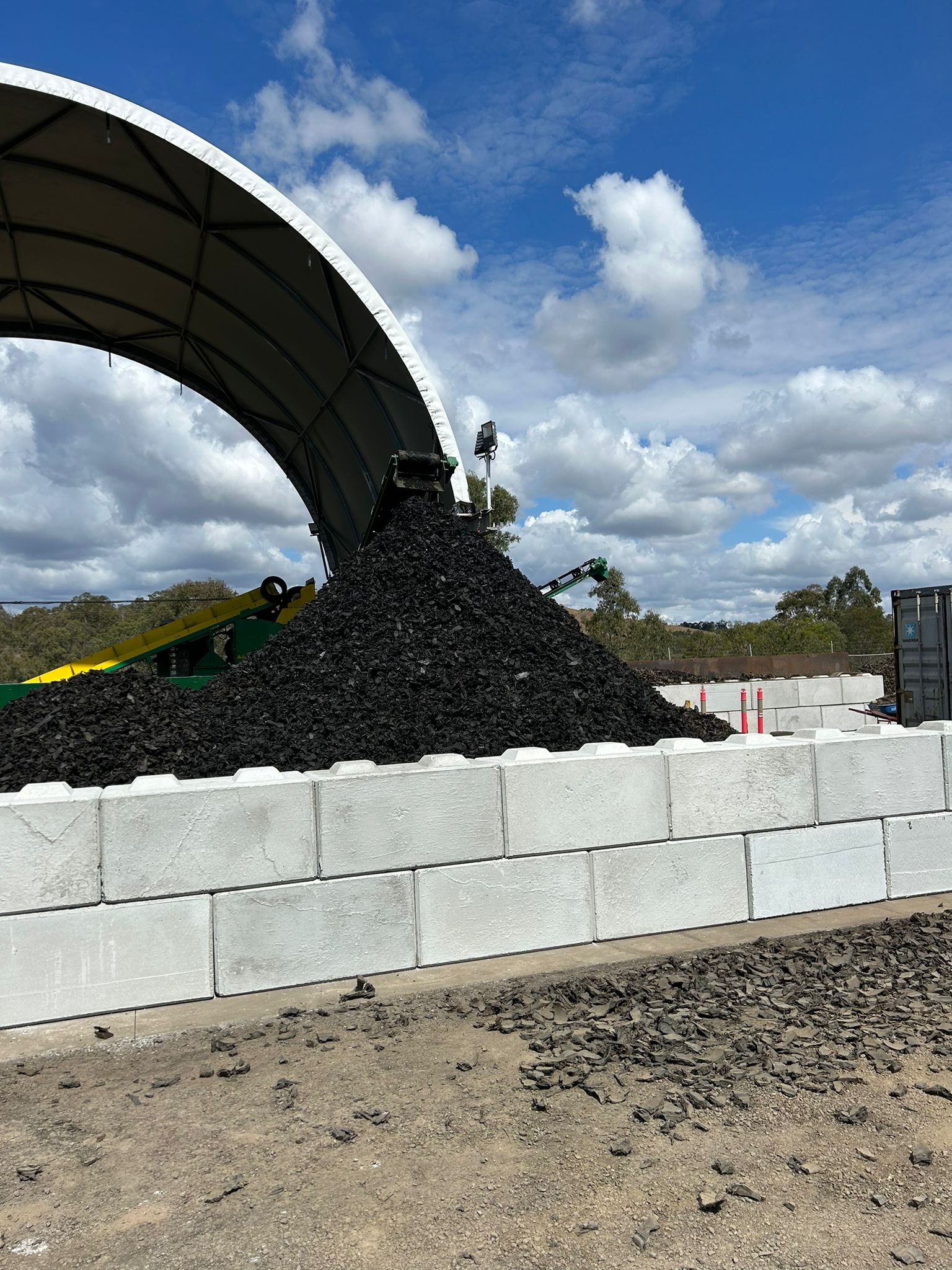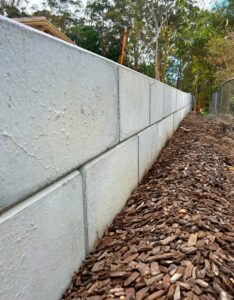Retaining walls are fundamental in landscape architecture and civil engineering. Designed to hold back soil and prevent erosion, these structures are crucial in managing sloped terrains. They create usable land in hilly areas and stabilize slopes to prevent landslides, particularly important in regions experiencing heavy rainfall.
Choosing the Right Blocks for Your Retaining Wall
Materials Overview:
Selecting the appropriate materials for retaining walls is crucial and varies based on project specifications, environmental factors, and aesthetic desires. Concrete blocks, particularly interlocking types, are favored for their superior durability and versatility, accommodating a wide range of applications.
What blocks to use for a retaining wall?
InfraBlock’s Curvature Retaining Blocks and Industrial Interlocking Blocks are ideal choices for retaining walls. These blocks are engineered to interlock securely, enhancing the structural integrity and longevity of retaining walls, making them suitable for both aesthetic and structural purposes.
Cost-Effective Retaining Wall Options
What is the cheapest type of retaining wall?
Gravity retaining walls, which utilize their mass to retain soil, are typically the most cost-effective solution. InfraBlock’s Industrial Interlocking Blocks are particularly well-suited for such applications, offering substantial stability without the need for extensive reinforcement.

Benefits of Using InfraBlock’s Concrete Blocks for Retaining Walls
The advantages of using InfraBlock’s concrete blocks extend beyond their functional benefits:
- Durability: Known for their longevity and minimal maintenance, these blocks are an excellent long-term investment.
- Installation Efficiency: The modular nature of InfraBlock’s blocks allows for rapid construction, significantly cutting down labor costs and project duration.
- Environmental Impact: InfraBlock is committed to sustainable practices, utilizing recycled materials in their block production, which helps reduce landfill waste and lowers the carbon footprint.
Installation Tips for Block Wall Retaining Walls
Installation Guide:
Effective installation is paramount for the success and longevity of retaining walls. Here are detailed steps and considerations to ensure optimal installation:
- Foundation Preparation: A robust foundation is the cornerstone of any retaining wall. It must be solid and level to support the weight and pressure of the retained soil. Begin by excavating the area to a specified depth, generally at least several inches below the frost line to prevent shifting during freeze-thaw cycles. Compact the base material, usually gravel or coarse sand, to create a stable base that’s free from organic material. This step is vital to prevent settling and ensures that the wall remains upright and stable over time.
- Proper Alignment and Leveling: Accurate alignment and leveling are critical. Use a level and string line to ensure that each block is placed perfectly horizontal. This meticulous approach prevents the wall from leaning or bulging, which could lead to structural failures. As each layer or course of blocks is added, check for level and adjust as necessary, ensuring each block is securely interlocked with the one below it.
- Adequate Drainage: Proper drainage is crucial to relieve hydrostatic pressure built up behind the wall, which can cause bulging or failure. Install drainage pipes at the base or behind the wall, and fill the space with gravel to promote water escape. Ensure that the landscape grading directs water away from the wall, and consider installing weep holes to allow trapped water to escape.
Design Ideas for Block Wall Retaining Walls
Creative Uses:
Retaining walls can be much more than purely functional; they also offer significant aesthetic enhancements to any landscape:
- Feature Garden Walls: Use retaining walls to create defined spaces in gardens, such as raised planters or borders that add depth and interest to flat landscapes. Choosing blocks in various colors and textures can integrate seamlessly with the natural surroundings or provide a striking contrast.
- Integrated Terraced Seating Areas: In sloped gardens, retaining walls can be strategically placed to create terraced levels, providing both soil retention and built-in seating areas. This is especially useful in outdoor communal spaces like parks or large backyards, where the terraces can serve as audience seating for events or as quiet, contemplative spaces.
- Architectural Features: Beyond traditional uses, retaining walls can be incorporated into the landscape as aesthetic features themselves. Curved walls, zigzag patterns, or incorporating built-in lighting can transform a functional retaining wall into a centerpiece of garden architecture.
- Multi-Functional Structures: Consider designs that integrate other elements such as water features, fire pits, or outdoor kitchens with retaining walls to maximize space and enhance functionality. Such designs not only retain soil but also add incredible value and enjoyment to the property.
Maintaining Your Block Wall Retaining Wall
Maintenance Tips:
Regular maintenance is key to the longevity of your retaining wall:
- Inspect Regularly: Regular checks for any signs of movement or cracking are crucial, as these may indicate foundational or drainage issues.
- Ensure Good Drainage: Maintaining clear weep holes and drainage paths is essential to avoid water damage and structural issues.
Building a retaining wall is a significant investment in your property’s safety and aesthetics. Choose InfraBlock for high-quality, sustainable, and cost-effective solutions. To learn more about our products or discuss specific requirements for your next project, contact InfraBlock today. Partner with us to ensure your project’s success with the best materials on the market.




